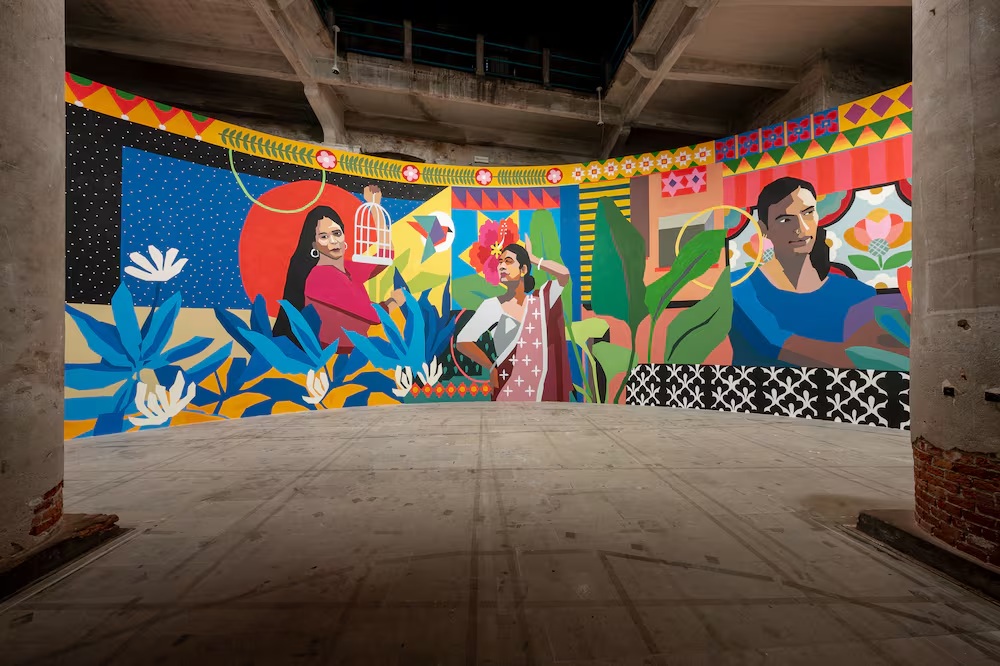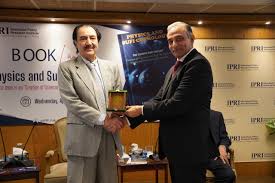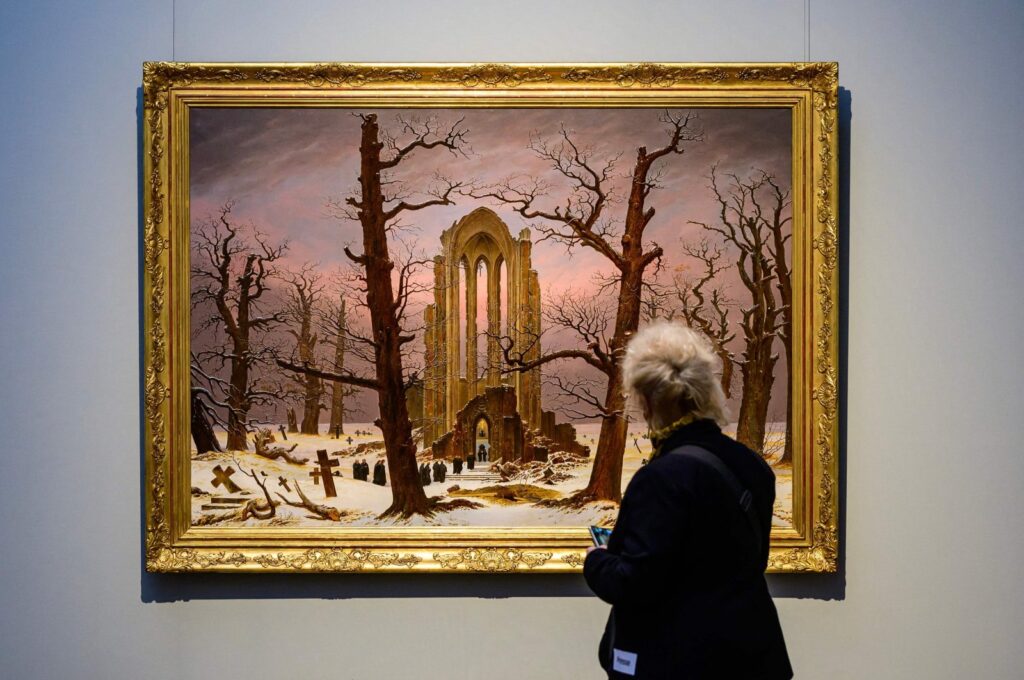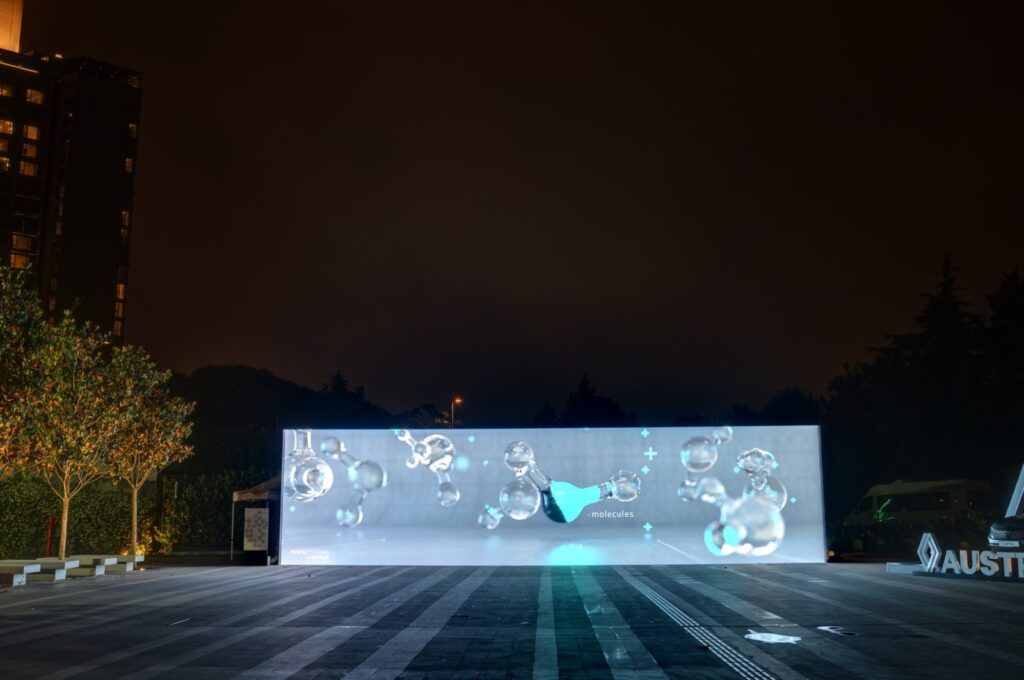
Rawaa Talass
DUBAI: Here is a selection of great works by Arab artists at this year’s fair, which launched its 16th edition on Wednesday featuring over 130 galleries from over 40 countries.
Abdullah Al-Othman
‘The Language of the City’

The Saudi artist presents a large neon installation from 2019. Made of lightboxes and wooden signage, the work layers numerous street signs from his native Riyadh — some collected, some recreated — including signs for a hotel, a barbershop, a restaurant, and coffee shops. The signs, some of which are amusing, also tap into the city’s mix of different ethnicities. “I do believe that a city absorbs its identity from the language of its residents,” Al-Othman explained in an Instagram post. “… a site becomes an identity, a narrative, and a biographical backdrop for each inhabitant.”
Afifa Aleiby
‘Enchantment’

The Iraqi artist serene 2021 painting shows a woman partially veiled in a dark lacy fabric set against a background of vivid grass and a cloudy sky. Looking away from the viewer, her eyes are peacefully closed, lost in her own thoughts. The play of light and shadow is especially notable. Portraying femininity is at the heart of Aleiby’s practice. “There is a tenderness in the way a woman moves, sits, talks and uses her hands,” she previously told Arab News. “These are all important factors for me and they enrich my painting.”
Maha Malluh
‘Food For Thought’

The Saudi artist is renowned for using found objects, such as colorful cassette tapes, large cooking pans, and polyester gloves, to create her mixed-media artworks and installations that tap into consumerism and her country’s changing social and visual culture. In this 2018 piece from her “Food for Thought” series, Malluh constructs a tower of 42 old enameled dishes and bowls typically used for serving food in Saudi households.
“When an object no longer serves its original purpose,” Malluh wrote in a statement, “it can get a new lease on life, through adaptive reuse by serving an entirely new purpose, thus preserving the heritage of its significance.”
Ibrahim El-Dessouki (Hafez Gallery)
‘Doors and False Doors 4’

The Cairo-born artist has followed in the footsteps of his parents, who were both painters. He typically depicts aspects of Egyptian life and culture. Against plain backgrounds, graceful, full-figured women — including Egyptian superstar Umm Kulthum — take centre stage in his vertical canvases, as in this recent work. “Some of those paintings express his nostalgia for the women who strolled in his neighborhood when he was a child,” reads a text published by his gallery, Hafez.
Helen Khal
‘Untitled’

Not only was the late Helen Khal – born in Pennsylvania to Lebanese parents – a pioneering writer, art critic, teacher and gallerist, but she made numerous abstract color-field paintings from the 1960s onwards, reflecting the light and colors of the Mediterranean. This 1974 masterpiece, infused with warm orange and pink hues, is rare because of its large scale and its subject matter – a tribute to the famed abstract expressionist Mark Rothko. “She said that she had always been influenced by the work of Mark Rothko” a gallery representative told Arab News. “It’s not copying at all. . . If you’ve seen a Rothko work, you can see that it’s masculine and tough. Hers is more feminine.”
Mona Saudi
‘Mother Earth’

This is one of several limestone artworks on display at Art Dubai Modern that the Jordanian sculptor, who died last year, created in the Eighties and Nineties. It’s delicate piece that resembles a tender embrace. “I’ve read poetry ever since I was little and most of my works are an embodiment of poetry,” she told Arab News in 2019. According to a description released by her gallery, Saudi focused on themes of growth and fertility. “Always starting with basic shapes, she goes on to give them movement, a life of their own — either repeating their forms, varying their depths or heights, or cutting them across one another to create new, graceful compositions,” it says.
Miryam Haddad
‘L’Ode Sans Fins’

Haddad was born in Damascus and is based in Paris. This three-paneled work is dominated by intense abstraction and impassioned sweeping swirls of paint. Haddad tells Arab News that the piece was inspired by the Syrian city of Bosra — a UNESCO World Heritage Site famed for its ancient Roman theater.
“This kind of theater is a real source of inspiration for me as it reflects human life. It reminds me of all the events that must have occurred in that place, where I imagine people talked about their great love stories, friendship, their lives during war and their hope for peace,” she says. “People were killed there, but others found their life in this arena.”
Marwan
‘Kopf’

The prominent Syrian artist, who died in Berlin six years ago, is one of several modern masters on view this year. Though he was born in Damascus, Marwan ended up building his career in Germany in the late 1950s. He is best known for his raw self-portraits, such as this one from 1974— the face lines of which have been compared to visceral landscapes. This piece was formerly owned by a German couple; the wife was one of the Marwan’s first sponsors.
Fatiha Zemmouri
‘Roundness’

The Moroccan artist describes her practice as “materialistic,” but it’s not what you’re thinking. She uses raw materials, such as tanned soil, charred wood and ceramics, to create her swirling sculptural compositions. “Roundness” addresses Zemmouri’s interest in nature and its fragility, as well as themes of construction, deconstruction, and evolution. What interests her most is “this in-between: to analyze the complex mechanism of transformation and to highlight the notion of time that elapses between the starting object and the transformed object,” according to her artist statement.
Courtesy: arabnews








